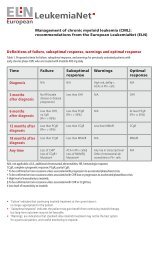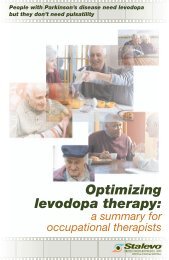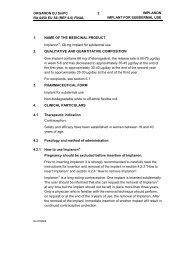Gracial ProdMonograph_cover - epgonline.org
Gracial ProdMonograph_cover - epgonline.org
Gracial ProdMonograph_cover - epgonline.org
Create successful ePaper yourself
Turn your PDF publications into a flip-book with our unique Google optimized e-Paper software.
Safety aspects<br />
Stroke<br />
With regard to ischemic stroke, new data have been generated<br />
in the WHO study (WHO 1996), the Transnational study<br />
(Heinemann et al 1997) and a Danish case-control study<br />
(Lidegaard and Kreiner 1998).<br />
The studies are not entirely consistent in their findings. The<br />
stroke publication of the WHO Collaborative Group provides<br />
separate information for the participating centers in Europe<br />
and for those in developing countries. Although the European<br />
data show no difference in the risk of stroke between Pill<br />
generations, the risk of stroke in second-generation OC users<br />
is statistically significantly increased in the centers from the<br />
developing countries, while no increase was found for users of<br />
the third-generation OCs.<br />
The odds ratios in the Transnational study (Heinemann et al<br />
1997) are higher than those observed in the WHO study and<br />
also depend on the type of control group. No differences<br />
between OCs of the second- and third-generation were<br />
observed.<br />
The study by Lidegaard and Kreiner (1998) concluded that<br />
OCs with 50 µg EE and OCs with second-generation<br />
progestogens significantly increased the risk of cerebral<br />
thromboembolic attacks (CTA), which include thrombotic<br />
strokes. However, OCs with third-generation progestogens did<br />
not have any significant influence on the risk of CTA.<br />
Acute MI<br />
The risk of myocardial infarction was assessed in five studies.<br />
In the Transnational AMI study (Lewis et al 1997), the risk of<br />
AMI was observed to be significantly increased in secondgeneration<br />
OC users versus no use, and was not increased in<br />
third-generation OC users compared to no use. When<br />
comparing second- and third-generation OC users, a<br />
statistically significant, three times lower risk was observed for<br />
users of the third-generation OCs (OR 0.3, 95% CI 0.1–0.9).<br />
The authors of the publication concluded that third-generation<br />
OCs are the first class of OCs not to be associated with MI.<br />
36
















